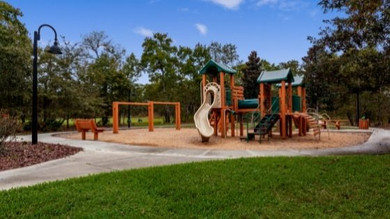
The most common source of playground injuries will always be from falling. Unfortunately, there’s no way to prevent kids from taking a tumble every now and then, but understanding what playground fall zones are and what they require, like deciding if mulch or rubber surfacing is a safer playground surface, can help mitigate the severity of injuries and protect kids. Take a look at some of the details to become better acquainted with fall zones.
Fall Zone Requirements
There are safety regulations every public park needs to meet, and fall zone requirements are part of that concern. A fall zone is the area surrounding playground equipment like slides, swings, or equipment kids can climb on. Per the requirements of the US Consumer Product Safety Commission (CPSC), these fall zones must be properly surfaced and extend at least six feet beyond the equipment in all directions.
In particular, slides should have surfacing that extends four feet plus the height of the slide from the slide’s exit—resulting in surfacing that is a minimum of six feet or a maximum of 14 feet. Swings also have specific guidelines. Swings must be surrounded by surfacing twice the length of their pivot point to the surface.
Critical Fall Height
Another aspect of playground fall zones and what they require is the critical fall height. The critical fall height is the distance a child can fall where a life-threatening head injury is unlikely, and surfacing thick and deep enough to absorb the shock of an impact mitigates this likelihood. You can determine the critical fall height by combining the acceleration of an impact with the duration of the impact in terms of potential head injuries. This consideration will help you determine how deep and thick your surfacing needs to be to ensure the safety of kids playing on a playground.
Surfacing Options
When it comes to choosing a surfacing material, there are two categories: loose-fill surfacing and pour-in-place surfacing. Loose-fill is material such as wood chips, sand, or pea gravel. This is more convenient initially, but the material can quickly be scattered outside the playground and will need refilling consistently. Rubber surfacing for playgrounds stays in place and is available in several forms, including pour-in-place.
Pour-in-place surfacing is typically made up of rubber. This form of surfacing is more durable and unable to be kicked or moved outside of the playground. You can’t simply refill the surfacing when it starts to become worn down, however; instead, you’ll use a playground surface repair kit. Pour-in-place is better for a more accessible playground because wheelchairs and other equipment can maneuver on it.

